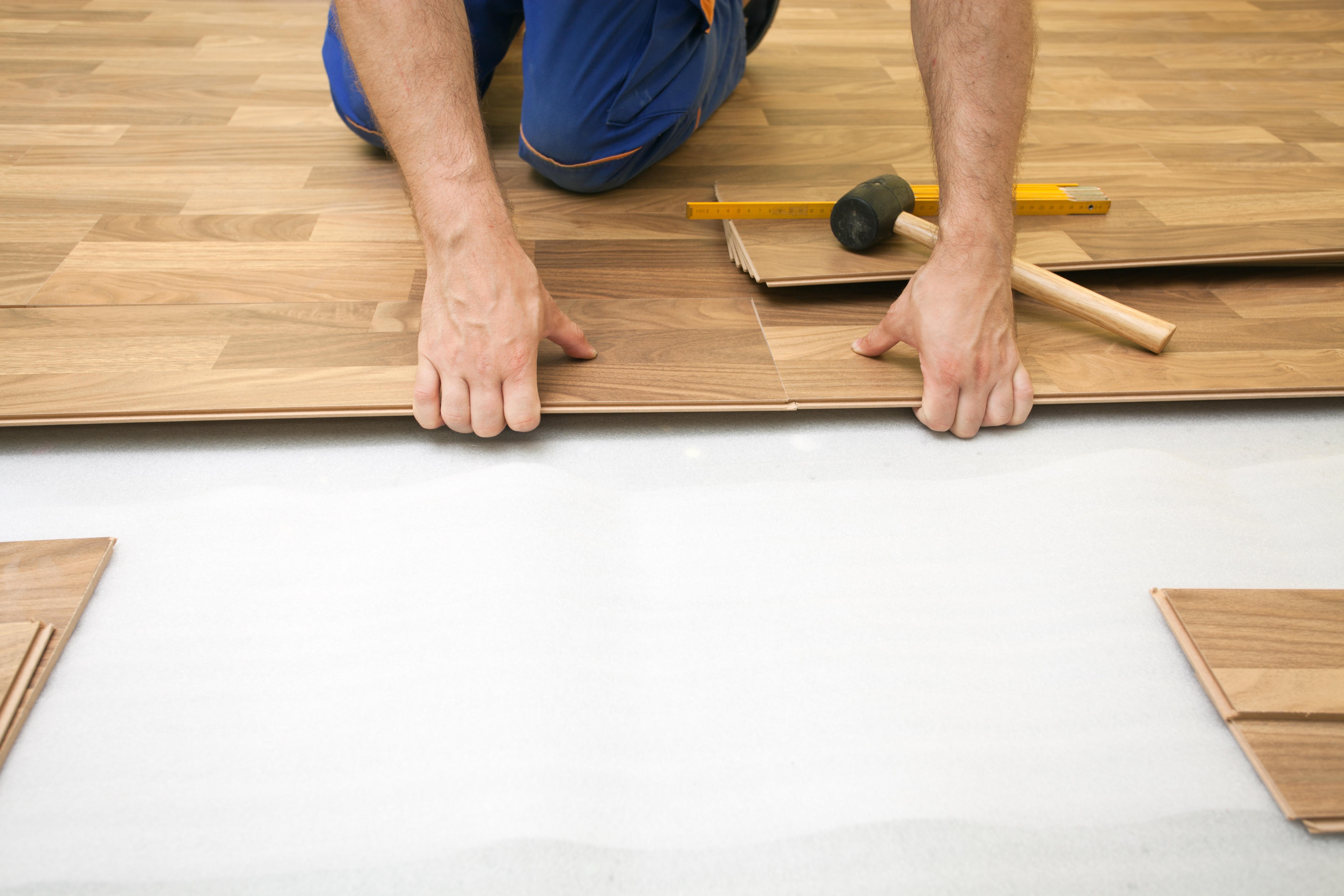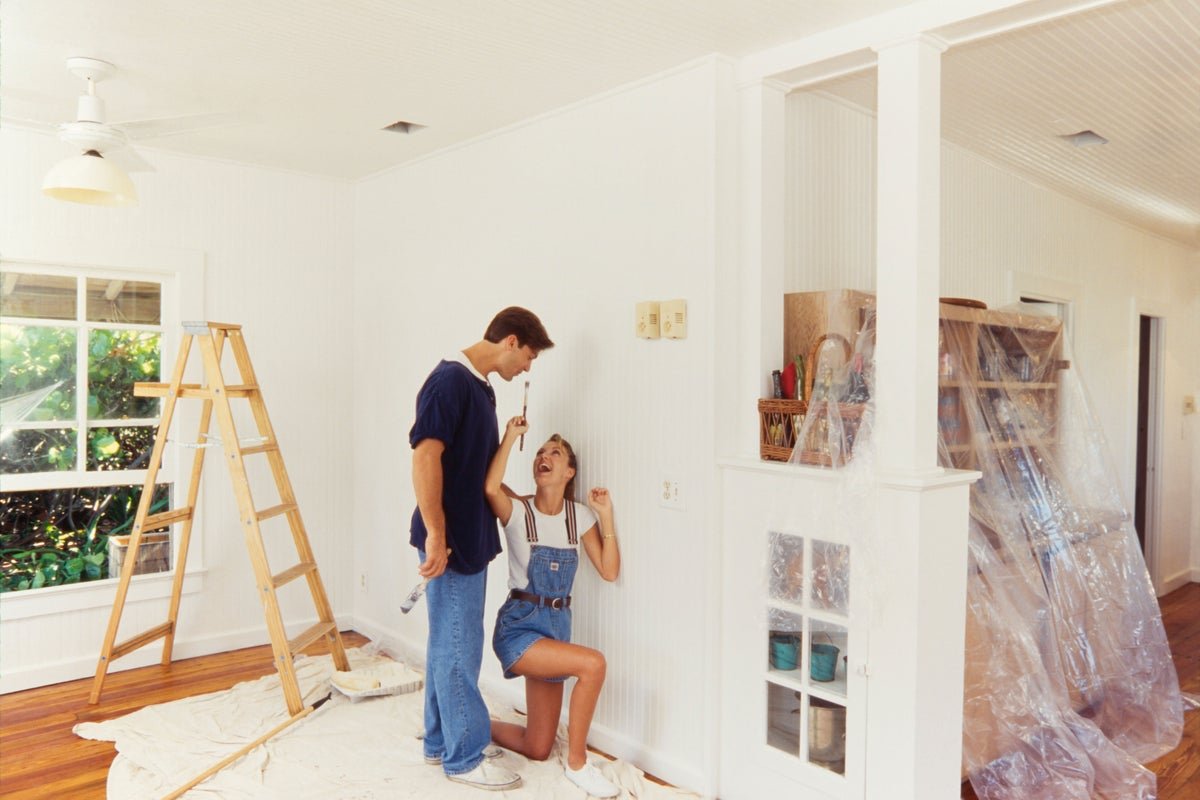Many homeowners are choosing to improve their current properties rather than move, as new research reveals that one in five find moving financially unfeasible.
The study indicates a notable increase from two years ago, when only 13 per cent of homeowners felt similarly constrained.
With the costs associated with moving proving prohibitive, many are opting to invest in their existing homes instead.
Indeed, more than half (54 per cent) of the 2,000 UK adults surveyed by home and garden PR agency Unhooked Communications intend to make home improvements over the next 12 months.

The most popular plans include decorating (31 per cent), landscaping the garden (21 per cent), making better use of existing space (23 per cent), laying new flooring (12 per cent), installing a new bathroom (11 per cent), creating an outdoor dining and entertaining area (11 per cent), fitting new windows or doors (11 per cent) and installing a new kitchen (11 per cent).
“More and more homeowners are choosing to stay in their current properties – not always out of preference, but often out of necessity, with challenges including high interest rates, market uncertainty and affordability challenges,” says Unhooked Communications MD, Claire Gamble.
She points out that today’s home improvement decisions are influenced by a blend of emotional, practical and financial factors, with the most common reasons for making improvements including enhancing comfort and wellbeing, making better use of space, and updating a home’s look and style.
“A notable 14 per cent say they want to improve their homes to impress or inspire others – highlighting the growing impact of aspirational living and social influence,” she says, explaining that cost and value top the list of considerations, followed by quality and durability, and then style and trends.
She adds: “Ultimately, homeowners are making thoughtful investments with long-term value in mind.”
But are the popular improvements worth doing? We asked tradespeople to give us the lowdown…
1. Decorating
View this post on Instagram
Ashley Aspin, a decorator and colour consultant from Stockport, says she’s noticed people are giving just as much attention to rooms like guest bedrooms, utility rooms and hallways as they are to main living areas.
“There’s something quite freeing when people realise they’re going to stay put, rather than move,” she explains. “It can make them more thoughtful about how they transform their homes to suit their tastes – for example, I’m finding people are being much bolder with their colour choices because they’re decorating just for them, rather than thinking they need a ‘safe’ option because they want to add value to their property, or make it neutral to appeal to potential future buyers.”
She points out that if people do move, they’re likely to redecorate or make other changes around the home anyway.
“People are being more creative with their current homes and investing their time, money, and energy into making it a space they love that makes them feel good, which is often reflected in their decorating choices.”
Painting and decorating fees vary depending on a house’s location and condition, and what work is being carried out, says Aspin. Painters and decorators typically quote an estimate based on a day rate and material costs.
2. Garden landscaping
View this post on Instagram
David Hine, a landscape architect in Derbyshire, says many homeowners are looking at ways they can use their outdoor space for different purposes, whether that’s for children playing, entertaining guests or relaxing in nature.
“Even in smaller spaces, homeowners want to see how well thought-out design with different zones and layers can enable them to use their garden in multiple ways throughout the year,” he says.
In addition, he says many people are considering biodiversity and sustainability, choosing to introduce more plants and features that benefit wildlife into their homes and gardens, as well as features like water butts to help recycle rainwater.
“Reusing existing materials, such as old decking or paving slabs, is another trend as it helps to reduce costs and waste, plus they can be integrated into the new design in a creative way,” he says.
And property and construction expert Gregory Smith from PriceYourJob.co.uk, says that while a standard garden landscaping job can cost between £200-£450 per square metre for a basic upgrade, more complex designs, larger areas and high-quality materials can run into several thousand pounds.
“A garden that’s well landscaped will almost certainly add value to a property, potentially up to 20 per cent,” he says.
3. New flooring

Replacing flooring is a popular way of upgrading a home and there are plenty of options to choose from, such as wood, tiles, concrete, carpet or vinyl, says Smith.
Each material will have different costs per square metre, and obviously the size of the room and whether you fit the flooring yourself or pay for installation will also affect the price.
As an example, Smith says a laminate floor could cost between £1,000 and £1,500 for a room that’s approximately 25sqm. In contrast, solid walnut flooring will cost around £70 per sqm, so around £1,750 for a 25sqm room.
He says: “Laminate flooring for a small room can typically be laid in a day while a tiled floor can take several days. Solid wood floors also take longer to lay as you have to include acclimatisation.”
And for homeowners who are planning to move eventually, he adds: “For the most part, if you invest in good-quality hardwood floors, you will be more likely to attract buyers than if you stick down cheap laminate or carpet.”
4. Making better use of space
Austin Healey, a builder at IMR Services in Stockport, says that since the pandemic most of his work has been maximising space in homes by building small extensions, knocking down walls to connect kitchens to the rest of the home, and garage conversions.
He’s recently completed several garage conversions, and explains: “The garages are too small for cars, so end up just being used for storage. People want to turn them into useful rooms like home offices or playrooms.”
Healey says the average cost of a garage conversion is around £9,000 – £11,000, and to knock a wall down to connect the kitchen to another room is around £3,000 (excluding new kitchens, flooring, and decorating).
5. Installing a new bathroom
View this post on Instagram
Although bathrooms come in various price brackets from budget to luxury installations, Smith suggests a ballpark figure for an average UK domestic bathroom would be around £4,000, and would take seven to 10 days to install.
He says: “The level of disruption when installing a new bathroom will be high. Obviously, this isn’t a room you can do without, especially if you’re a one-bathroom household, so it can be a stressful time, particularly if you have children.”
He explains that fitting a new bathroom can increase your home’s value by approximately 5%, and will also raise the property’s saleability, adding: “Kitchens and bathrooms are high on buyers’ list of priorities when viewing, so this is a worthwhile investment, as long as it’s done right.”
6. Creating an outdoor dining and entertaining area
This can be anything from a patio with portable barbecue to a dedicated alfresco space with built-in pizza oven, pergola and outdoor bar, says Smith.
“An average price would be around £5,000 for a fairly basic set-up,” he says, “but it can run to more than £20,000 if you want a more high-end look or a dedicated outdoor kitchen.”
#effective #home #improvement #tweaks #moving



